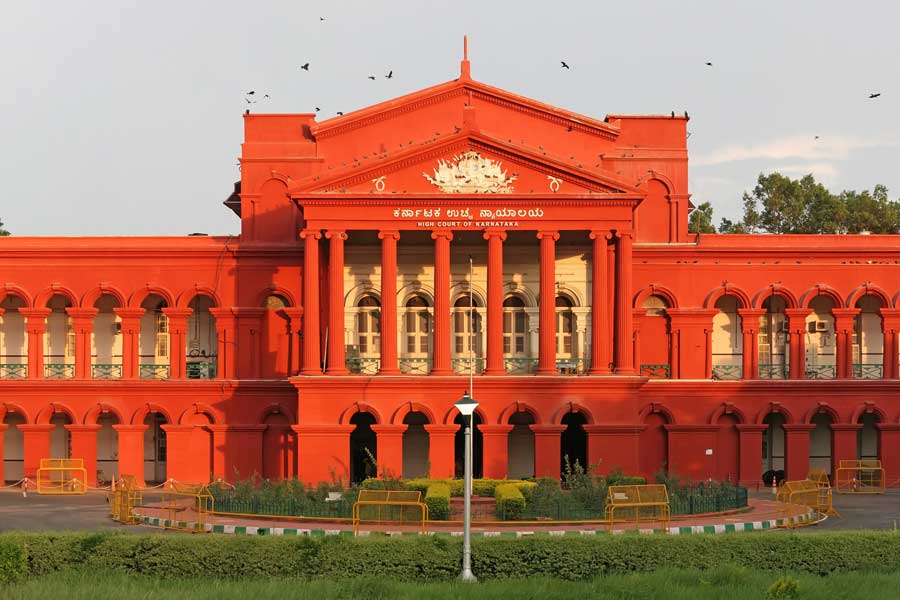FANTASY

Hazel, Foxglove and Wanda from The Sandman series by Neil Gaiman: Issues #32-37 of Neil Gaiman’s epic comic series, The Sandman, included three badass LGBTQ characters we still love and miss. Barbie, the protagonist, stays with her best friend Wanda, a transgender woman; a lesbian rock-star called Foxglove and her girlfriend, the bisexual chef Hazel. The women band together to fight against a mysterious foe. At the end of the story, Wanda finally gets to inhabit the female body she had wanted, but at a terrible cost. We love this girl gang because of how closely they stick together and defend one another in life, death and dreams.

Carmilla from Carmilla by Joseph Sheridan Le Fanu: Need a dose of the creepy in your Pride Month reads? Try this. An unknown woman leaves her daughter, Carmilla, in a remote castle where young Laura lives with her father. Carmilla sleeps during the day, seems to sleepwalk at night and makes romantic advances towards Laura. If you’ve read Dracula, you might know where the rest of this story is going! Carmilla is sensuous, clever and full of mystery — a very interesting character, even if she is a little... ahem... bloodthirsty!

Baruch and Balthamos from the His Dark Materials trilogy by Philip Pullman: Baruch was a human who became an angel after his death due to his angel lover Balthamos. The two work as a team to defeat the evil tyrant Metatron who rules the Kingdom of Heaven. Baruch does not shy away from his duty, even though Metatron was actually his brother when they were both human, and he bravely carries out his orders even when his life is under threat.
#SpoilerAlert: We only wish their story had ended on a happier note.
PAGE TO SCREEN

Simon from Simon v/s The Homosapiens Agenda by Becky Albertalli: This book was adapted as Love, Simon in 2018. Closet-gay highschooler Simon Spier begins to write emails under the pseudonym “Jacques” to a fellow gay student in his school, who goes by the name “Blue”. The emails are discovered and used to blackmail him. Simon now has to figure a way out of this mess, even as he tries to discover who “Blue” is in the first place. Simon’s willingness to help even those who are unkind to him and to learn from his mistakes makes him dear to us.

Lili from The Danish Girl by David Ebershoff: You must have heard of Eddie Redmayne’s Oscar-nominated performance in the 2015 film, The Danish Girl. But did you know it was based on a novel? The fictionalised biography captures painter Einar Wegener’s transformation into Lili, the woman Einar was always meant to be. Lili was one of the first people in the world to undergo sex reassignment surgery. Her relationship with her wife, Greta, who stood by her through the process, is heartwarming.

Celie from The Color Purple by Alice Walker: The novel was adapted into a movie in 1985 by Steven Spielberg, starring Whoopi Goldberg as Celie Harris Johnson. Celie, a black woman who has been denied love and exploited for her entire life, finds solace in her relationship with Shug, her husband’s mistress. She learns to be an independent woman and stands up to her abusers. Her terrible circumstances cannot erode her bravery and humanity, and we love her for it.
YOUNG ADULT

Cameron from The Miseducation of Cameron Post by Emily M. Danforth: Having lost her parents, Cameron has to move in with her conservative aunt, just as she begins to realise that she is gay. She is outed by the very friends she thought she could trust and is sent to a conversion camp: a place where gay individuals are pressurised to “convert” to heterosexuality. Cameron’s unwavering belief that there is nothing wrong with her and that she does not need to be “fixed” is her constant source of hope through this.

Nico from The Heroes of Olympus series by Rick Riordan: Nico di Angelo is the son of Hades, the Greek god of the Underworld. He was born in the 1930s and frozen in time by his father until he emerges in modern-day Las Vegas. Still carrying the beliefs of his time, he fights with all his will against the knowledge that he is gay, until one day, the God of Love himself forces Nico to confront his fears, and he admits that he is in love with another boy. Nico grows up in the books over the years, just as we did reading about him, and he teaches us about life, love and accepting ourselves as we are.

Aristotle and Dante from Aristotle and Dante Discover the Secrets of the Universe by Benjamin Alire Saenz: This book weaves many issues such as racial identity, artistic expression and the consequences of repressing traumatic memories. At the heart of it all is the friendship between Aristotle and Dante, two Mexican-American boys who become best friends and then lovers. Ari and Dante’s love helps to heal people around them as well, when they realise that the fears that they run from can only come back to hurt them in the end. Keep a box of tissues ready for this one!
CONTEMPORARY

Ed and Phil from The Golden Gate by Vikram Seth: Published in 1986, Vikram Seth’s fabulous first novel was written entirely in sonnets. Phil, who is bisexual, and Ed, who is gay, meet at a party and fall in love. But Ed is torn between choosing love and the path of God. We won’t spoil the end but let’s just say that Seth knows how to throw a surprise or two in a story! Phil is a patient man who accepts everyone with their own quirks — the perfect antidote to the vivacious Ed. We love that their sexualities are just a part of who they are, rather than the main focus.

Tamaru from 1Q84 by Haruki Murakami: This 2010 novel is set in a fictionalised version of the year 1984. Tamaru is a bodyguard of the “Dowager”, a widow who shields victims of domestic abuse in her home. Tamaru is openly gay and lives with his boyfriend. He is also tough as nails, being a former military man, and does not hesitate to take up arms if he finds himself or the people he works for in danger. We love that he defies many gay stereotypes: he is neither effeminate nor scheming.

Lisbeth Salander from the Millennium novels by Stieg Larsson and David Lagercrantz: Tattooed, highly intelligent, uncommunicative and openly bisexual computer genius Lisbeth Salander is one of the most badass characters ever created in literature. She dates multiple partners in the series but is in love with journalist Mikael Blomkvist. She never lets her traumatic upbringing hold her back and using her hacking prowess, goes about dodging criminals and avenging wrongs. We wish we could be half as spunky as her!
CLASSICS

Orlando from Orlando: A Biography by Virginia Woolf: What do you get if you take the powerful prose of Virgina Woolf, combine it with some zany humour, have a mysterious 300-year-old as the main character and toss some gender fluidity into the mixture? This epic novel! Orlando is an Elizabethan male nobleman who falls into a deep sleep around the age of 30 and wakes up in a female body. He accepts the change and begins to live as a woman, occasionally dressing up as a man. He is often pursued by the Archduchess Harriet who, after his sex change, reappears as the Archduke Harry. He ultimately marries Marmaduke Bonthrop Shelmerdine, who does not conform to any gender. Published in 1928, the book was miles ahead of its time.

Maurice Hall from Maurice by E.M. Forster: Inspired by the real-life story of poet Edward Carpenter and his partner George Merrill, this love story of two men, Maurice Hall and Alec Scudder, cuts across barriers of class. Maurice falls in love with fellow student Clive Durham at university but their relationship is kept secret by Clive until one day, he denies it altogether, claims to be heterosexual and marries a woman. Scudder, then a servant of the Durhams, comes into the heartbroken Maurice’s life after this and the latter learns to let go of his own class prejudice to accept him. The novel was considered to be so inflammatory that it was not published during Forster’s lifetime. It has become one of his most popular books since then.

Edward-II from Edward II by Christopher Marlowe: Published in 1594, the play is based on the real story of King Edward II and his love for his companion, Gaveston. Even his own Queen is resentful of their closeness and his nobles want him exiled as he had been before Edward came to the throne. While the word “homosexuality” did not exist in Marlowe’s time, and so can’t really be used to describe their relationship, the play strongly indicates that the two were lovers, and that homophobia played a major role in their fate.










